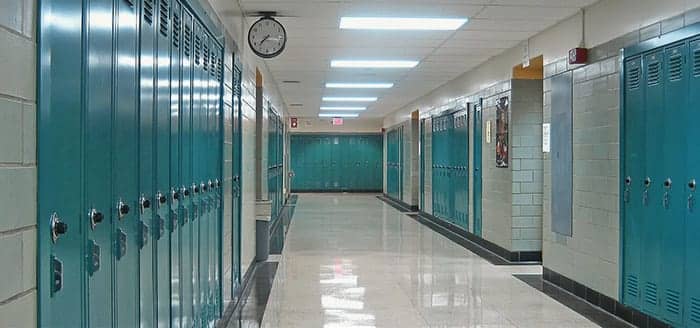Asbestos in Schools: What You Should Know

When we send our kids off to school every day, the first thing on our minds probably isn’t the environmental dangers they may be facing. But if their school building was built before the 1980s, it most likely contains asbestos. Asbestos is a natural mineral with fire-resistant properties and durability. Because of this, it was used widely in construction in both homes and schools. But how at risk are your children?
Dangers of Asbestos
Before you work yourself into a panic, it’s important to note asbestos only becomes dangerous when disturbed in some way. When the fibers become airborne, they can be inhaled and attach to the linings of our organs. Over time, these fibers can cause scarring and abnormal cell growth in the tissue, which could lead to a variety of serious health risks including mesothelioma.
There is no safe level of exposure to asbestos, and the health risks it poses likely won’t begin to show until potentially decades later. These health risks, however, are preventable and being aware of where to find asbestos can hopefully eliminate your risk of exposure–that is until asbestos is finally banned.
The EPA’s Steps to Protect Students and Teachers
The Environmental Protection Agency has strict laws in place to ensure schools are taking the proper precautions to keep students and teachers safe. In 1986, Congress passed the Asbestos Hazard Emergency Response Act (AHERA). This law requires schools to be inspected for the presence of asbestos, with follow-up inspections at least every three years. Schools must have a detailed asbestos management plan in place.
The Plan Should Include
- Documentation of any areas of the school that contain asbestos and the type of material
- Blueprints of the affected areas
- Plans for future inspections
- Details of any responsive action or preventive measures taken to reduce exposure
- A designated contact person to ensure all the necessary steps are taken
These plans are meant to be extremely exhaustive. If any faculty or parents inquire about the plan, the administration must make it available within five days of the request. Each year, the administration should also update parent-teacher organizations on any asbestos-related activity within the school and the plan’s availability. Additionally, custodial staff must receive asbestos-awareness training.
Having asbestos in our schools can be very dangerous if not handled and monitored correctly. These policies are important to have in place and followed properly.
Steps You Can Take
To help put your mind at ease, there are further precautions you can take to ensure your child’s safety including:
- Educate yourself on the possibility of asbestos being present in your school and the dangers it poses.
- Be aware of any construction or renovation going on in your school, which could possibly mean interference with asbestos and increased risk of exposure.
- If you’re concerned about any deteriorated areas in the school or ongoing construction, talk with a custodian or the trained staff to find out if it poses an asbestos hazard.
- Request a copy of the asbestos management plan and acting as a further check on the school administration to ensure exposure is not a threat.
Asbestos is a health hazard that needs to be taken seriously. With better awareness and education, we can all help prevent future exposure to the carcinogen and push for a much-needed ban!